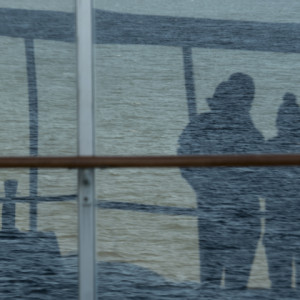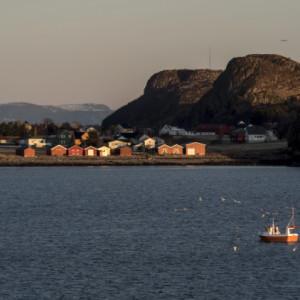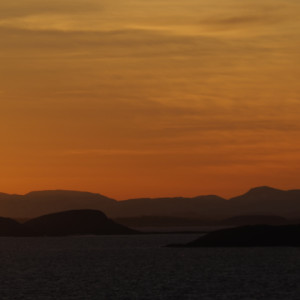Viking/Christian
It is still dark when we leave the ship around 8.30 and I see ice everywhere. Some is gritted but I do not trust it. The city centre should be 20 minutes’ walk from the quay but my terrified feet cannot find a place to feel safe. Step by slow step we make our way into town.
The people in the camera shop reassure me that the front glass is firmly enough attached for me to be able to use the camera and that the lens should be repairable when I get home. They praise me for having had a UV filter on the lens and gently chide me for not using a lens hood. They tell me to use a sock as a lens cap in the meantime. I am overwhelmed with relief.
Between there and Nidaros cathedral is a street of pretty pastel wooden houses and I realise what the vile Bicester Designer Outlet Shopping Village is failing to emulate.
The cathedral takes more steps over ice but is worth it. For a while I think it’s quite plain, as cathedrals go, then realise that the lighting is accentuating its fluted gothic structure and vaulting rather than its decoration. It was built in the 11th and 12th centuries (then restored in the 19th century after fires and lightning strikes) over the tomb of King (St) Olav II around whom an elaborate bringing-Christianity-to-Norway mythology has grown.
There’s more mythology nearby on the Old Bridge where, allegedly, if you kiss your beloved, your relationship will last for ever. Who needs Relate if you can get to Trondheim, eh?
Picking a path back to the ship is very much easier once the sun is shining, even though there are still large patches of ice on the pavements. And it’s time for the layers of thermals, cashmere, fleece and windproofery out on deck again (extra) to look at the strange island of Munkholmen which over the last 1,000 years has been an execution site, a monastery where the monks got rich by offering care to old people in exchange for their farms, a prison and an ammunition store for the occupying Nazis in the second world war.
One of the most striking things about this coastline, apart from the absurdly unfeasible beauty of the snow-topped mountains and the luminous skies, is human habitation. Wherever there is a bit of flattish land there is a cluster of buildings: terra cotta-coloured fish-houses at the water’s edge and dark green or yellow homes nearer the mountains. These are tiny communities, with domestic-scale livelihoods, strung out all along the coast (extra).
Every now and then I go inside to get warm then emerge onto the deck again. As it has been a glorious, clear day right to the very last rays of sun (extra), I carry my camera and warm clothes with me all evening. I’ve done my Northern Lights research and know that seeing them depends on two things we have – darkness and a clear sky – and one thing my Aurora app tells me isn’t too bad: sunspot activity/solar winds. Sure enough, around half past ten there is an announcement that the Northern Lights are visible. Out! Outside to the deck now! From there I see faint bands of light towards the horizon (extra). These are my first ever Northern Lights and I look and look.
It is not widely enough known that the human retina is rarely able to see the greens and mauves that appear in photos of the Northern Lights. We have two sorts of photoreceptors: ‘rods’, which are very sensitive to the size, form and movement of light but which do not detect colour, and colour-sensitive ‘cones’, which work only when the light is bright. So I use the camera on a 20-30-second exposure (f4, ISO 1600) to confirm what is out there. It picks up dark green bands with the occasional bright green flare. After a while I start to see pale green in the grey light. A brain delusion?
Gradually they fade but I don't really believe it. They must come back and I cannot miss them. I go to bed half-dressed, with my warm layers to hand to pull on if the announcement comes again.
Credit to my daughter for seeing this shot. Mine is pure plagiarism.




Comments
Sign in or get an account to comment.


